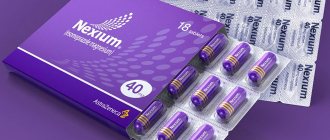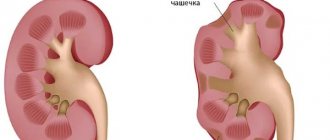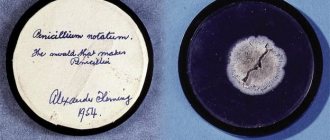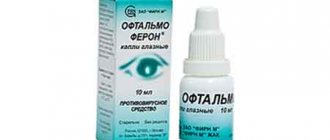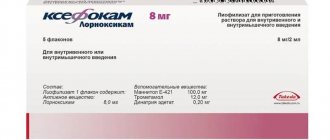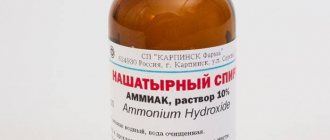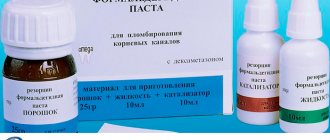Modern drugs for reducing acidity levels in the treatment of inflammation and ulcers of the stomach, esophagus, and duodenum are enough to be taken only once a day. A class of these medications are called proton pump inhibitors (PPIs for short), which temporarily suppress the production of hydrochloric acid by the stomach glands to allow the mucous membranes to heal and repair. Omez and Nexium are among the most frequently prescribed representatives among dozens of other similar PPIs. These are not analogues, but the difference in efficiency between them is not as great as the difference in price.
Omeprazole
An antiulcer drug based on omeprazole, an active substance that suppresses the activity of hydrogen, potassium ions and the ATPase enzyme in the parietal cells of the stomach.
The advantages of omeprazole over substances of similar action are that it is more effective than others in reducing the production of hydrochloric acid and blocking the final stage of this process, regardless of the nature of the stimulating factor. Maximum inhibition of the acid formation process by 50% lasts about a day.
It is worth noting that the use of this medication is possible even in cases of extremely severe patient condition. In intensive care patients, the medicine is administered through a catheter directly into the stomach. To do this, prepare a solution in the ratio of 20 mg of Omeprazole in powder form per 30 ml of water. Within a few minutes, the components of the drug are completely dissolved, after which the drug can be administered to the patient through a gastric tube.
In cases of extremely serious condition of the patient, Omeprazole is administered intravenously, for this purpose a solution of the active substance with sodium chloride is used.
Pariet: basic information
The drug is an antiulcer agent, the therapeutic effect is provided by the rabeprazole contained in the drug. The substance, a benzimidazole derivative, has antisecretory properties: it suppresses the production of gastric juice by inhibiting the synthesis of H+/K+ ATPase, localized on the cell surfaces of stomach tissue, and thereby blocks the last stage of the formation of hydrochloric acid.
Pariet is produced in tablet form, each pill is protected by an enteric coating. The content of the active component is 10 or 20 mg.
Indications for use:
- Elimination of manifestations of dyspepsia caused by high pH of gastric juice, including symptoms of GERD.
Side effects
If you follow medical recommendations, Pariet is generally well tolerated by patients, but can cause unwanted reactions in the body:
- Manifestations of individual allergies, up to acute forms
- Changes in blood components
- Decreased magnesium in the body
- Activation of liver transaminases, hepatitis
- Skin reactions
- Pain in muscles, joints
- Breast enlargement
- Susceptibility to fractures.
Nexium
Nexium belongs to the group of inhibitor medications that inhibit the production of HCl in the gastric glands. By inhibiting the secretory activity of the glands, Nexium effectively lowers the acidity level of digestive juice. Therefore, it is often used in complex drug therapy regimens for gastroesophageal reflux disease, gastric or duodenal ulcers, and disorders of the structure of the mucous membranes of the gastrointestinal tract.
Nexium contains esomeprazole, an isomer of omeprazole, which has similar pharmacodynamic activity. Since esomeprazole exhibits weakly basic properties, it begins to act actively in the acidic environment of the secretory tubules of parietal cells. As a result, the basal secretion of hydrochloric acid is inhibited.
Be sure to discuss whether Esomeprazole or Omeprazole is better and what the difference is between them.
The biologically active substance of the medicine begins to act effectively within one hour after taking the tablet. Just 20 mg per day can reduce the amount of hydrochloric acid in the stomach by 15-20%. And during a course of therapy lasting 6 days, its concentration decreases by 80-90%.
Omez: brief description
An antiulcer agent from the group of proton pump inhibitors.
The active component of the drug is omeprazole. The substance has the ability to suppress the production of gastric acid at the last stage of synthesis through inhibition of H+-K+-ATP in specific cells. The therapeutic compound is a prodrug and is activated only after conversion in the acidic environment of the stomach.
Indicated for use for:
- Therapy and prevention of relapses of peptic ulcer/duodenal ulcer
- Treatment of reflux esophagitis
- Elimination of hypersecretion of hydrochloric acid
- Therapy of ulcerative-erosive phenomena after a course of NSAIDs
- Preventing gastric contents from entering the respiratory system in patients under anesthesia.
- Hematopoietic system disorders
- Disorders of the digestive organs (constipation/diarrhea, pain, gag reflex, nausea, flatulence, liver enzyme activity, etc.)
- Central nervous system disorders: headaches, dizziness, depression, nervous agitation, encephalopathy
- Pain in muscles, joints, muscle hypotonia
- Skin reactions: rash, sensitivity to sunlight, baldness
- Manifestations of allergies: urticaria, bronchospasm, Quincke's edema, interstitial nephritis
- Other conditions: weakness, gynecomastia, blurred vision, peripheral edema, sweating, formation of gastric cysts (with a long course).
Omez is prohibited from use when:
- Individual sensitivity
- Pregnancy, breastfeeding
- Childhood.
Caution is required when prescribing to patients with hepatic/renal hypofunction.
Comparative characteristics of Omeprazole and Nexium
- The antisecretory drugs Nexium and Omeprazole are analogues, as they have a similar chemical composition, indications for use and similar pharmacological effects. However, the modern drug Nexium not only reduces the concentration of HCl in the stomach, but is also capable of maintaining control of the normal acidity of the environment for a long time.
- It is worth noting that there is a difference in the bioavailability of the components of Nexium and Omeprazole. The first drug is more actively absorbed by the walls of the small intestine, quickly enters the bloodstream and reaches damaged areas of the digestive organs. Which indicates its high therapeutic effectiveness. The modern formula of the drug has shown better results in curing a larger percentage of patients.
- In addition, the use of Nexium in all dosage forms by patients with functional impairment of the kidneys has shown that no adjustment is required to the usual regimen of use and dosage of the drug. However, clinical experience with the use of Nexium in patients with severe renal failure to date is limited. Therefore, the drug should be prescribed to such patients with great caution. Severe liver failure is the reason for reducing the daily dose of the drug for adults to 20 mg.
- It must be remembered that taking Nexium can cause side effects associated with disruption of many organ systems. Thus, disturbances in the functioning of the nervous system manifest themselves in the form of headaches, dizziness, and drowsiness. Sometimes there is a disturbance in the activity of taste buds. The effect of Nexium components on the organs of the urinary system can manifest itself in the form of disruption of the activity of the nephrons of the kidneys and the provocation of nephritis. Taking the drug may lead to constipation, diarrhea, severe flatulence and abdominal pain. Various rashes and itching may occur on the skin.
- Nexium can be used to treat patients under 12 years of age. In this case, the form of the drug is granules, which must be dissolved in water and stirred well until a homogeneous suspension is obtained. One packet of granules will require 15-20 ml of water. You should drink the Nexium solution immediately. The daily dose of the drug should not exceed 10 mg. Usually the course of treatment lasts no more than 2 months.
- Taking Nexium, as well as Omeprazole, is not recommended during pregnancy and lactation. Since there is insufficient clinical data proving the safety of omeprazole and its isomers on the developing fetus and the infant’s body. Therapy with drugs for this group of pregnant women is carried out in extreme cases and under the strict supervision of a doctor.
How is Omez different from Nexium?
According to the principle of action, the drugs are very similar, so we can distinguish only 3 significant differences that will influence the choice in favor of one or the other.
1. Composition. Nexium and Omez formally have different active ingredients - esomeprazole and omeprazole, respectively. However, in terms of chemical structure, it is only a slightly modified form of the same molecule. The newer esomeprazole in Nexium is only a modification of omeprazole from Omez, and not a fundamentally different substance. Of course, this gives Nexium some advantages in more uniform absorption and elimination of the drug, but in practice the therapeutic benefits of esomeprazole are not much different from regular omeprazole (see below for comparison of effectiveness).
2. Available forms and their variety. Swedish Nexium is available in tablets, and Indian Omez in capsules. For the patient, this difference does not matter, since tablets and capsules of both drugs must be taken whole, once a day and half an hour before meals. Both drugs are also available in vials as an intravenous solution (drip).
Nexium is additionally available in sachets of granules, while Omez has a similar form in the form of Omez Insta powder. They have a slightly faster action, but it is advisable to use them only if the patient is unable to swallow conventional tablets and capsules.
Omez has another variation that his opponent does not have - this is Omez DSR (detailed comparison). DSR contains a combination of omeprazole and domperidone in one capsule. This combination may be useful for severe nausea and esophagitis (inflammation of the esophagus).
3. Cost of treatment. Nexium tablets and bottles are approximately 2 times more expensive than Omez capsules and bottles in similar dosages (20 or 40 mg). The price difference between Nexium granules and Omez Insta powder is much higher, reaching 10 times for the same number of sachets in favor of the Indian competitor.
What to choose?
Only the attending physician can clearly answer the question of which drug is better. Since each remedy under certain conditions can manifest itself differently. However, if we analyze the effectiveness of drug therapy with Nexium and Omeprazole, then the first has a number of significant advantages over the second.
The use of Nexium gives a better and more accurate prognosis for normalizing the acidity of digestive juice. The percentage of patients cured of ailments associated with impaired gastric secretory ability during short courses of therapy is higher.
There is a rapid disappearance of symptoms of defects in the mucous membranes of the stomach, duodenum and esophagus, which indicates a high rate of regeneration of damaged areas of the internal lining of the gastrointestinal tract. Most patients experience heartburn and other painful symptoms.
Another proof of the good effectiveness of Nexium is data comparing course periods of treatment with analogue drugs. It has been established that a complete cure of a patient with Nexium occurs in just a month, when the course of treatment with Omeprazole is twice as long.
A course of Nexium in combination with antibiotics gives the effect of destroying Hilocobacter pylori and scarring ulcerative disorders of the gastric mucosa in just a week. The duration of such complex treatment with Omeprazole is 21 days.
Comparison of ease of use of Nexium and Omez D
This includes dose selection taking into account various conditions and frequency of doses. At the same time, it is important not to forget about the release form of the drug; it is also important to take it into account when making an assessment.
The ease of use of Nexium is approximately the same as that of Omez D. However, they are not convenient enough to use.
The drug ratings were compiled by experienced pharmacists who studied international research. The report is generated automatically.
Last update date: 2019-09-19 06:00:57
Source
Possibility of simultaneous administration of Omeprazole and Nexium
Drugs of the same group cannot be recommended for joint use. Since such therapy can lead to a sharp increase in the concentration of biologically active substances in the body. This can trigger the development of a large number of side effects. Including lead to disturbances in the functioning of the digestive, urinary and nervous systems. Patients may experience severe allergic reactions.
Anyone taking medications containing omeprazole and its isomers should systematically consult a doctor about the combination of various medications and their dosage regimen. Only such treatment of medications will give the desired treatment effect.
Comparison of addiction between Nexium and Omez D
Like safety, addiction also involves many factors that must be considered when evaluating a drug.
So, the totality of the values of such parameters as “o syndrome” in Nexium is less than the similar values in Omez D. Withdrawal syndrome is a pathological condition that occurs after the cessation of the intake of addictive or dependent substances into the body. And resistance is understood as initial immunity to a drug; in this it differs from addiction, when immunity to a drug develops over a certain period of time. The presence of resistance can only be stated if an attempt has been made to increase the dose of the drug to the maximum possible.
Advantages of Pariet over similar drugs
The advantage of rabeprazole over its analogues is that it acts on the root cause of heartburn, and does not simply remove the symptom. Heartburn occurs as a result of the reflux of hydrochloric acid into the esophagus. With the participation of Pariet, hydrochloric acid is produced directly in the stomach, without irritating the esophagus.
Compared to other medications, rabeprazole has the following advantages:
- during the first 3 hours: regulation of acid production, effects on parietal cells of the gastrointestinal tract,
- after 3 hours: reducing stomach acidity, maintaining its normal level.
- acid production is blocked for 2 days, there is no reflux of acid into the esophagus,
- During the day, the walls of the esophagus are protected by natural mucus, the secretion of which is stimulated by the drug.
When using antacids, the synthesized acid is neutralized, but its production continues, and the symptom returns again after a short time. As its concentration increases and enters the esophagus, the patient again feels heartburn.
Comparison of Pariet with other drugs
The opinions of gastroenterologists agree: there is no convincing information regarding the better effectiveness of Pariet over other drugs from the proton pump group. Each of the drugs has a stated pharmacological effect and can be used in multicomponent treatment regimens, taking into account the indications for use, the presence of associated complications, and the general condition of the patient.
When comparing Pariet with other proton pump inhibitors (PPIs) for long-term treatment of gastroesophageal reflux disease, doctors made the following conclusions:
- medications based on lansoprazole begin to act faster than rabeprazole (Pariet),
- When using combination treatment, which involves taking several groups of drugs, pantoprazole-based drugs are the safest.
A number of doctors are also convinced that the inclusion of PPIs, including Pariet and its analogues, in multicomponent treatment regimens for gastric ulcers caused by Helicobacter pylori does not play a significant therapeutic role. Without the concomitant use of antibiotics, treatment will be ineffective.
Which is better: Nolpaza or Pariet?
Both drugs have similar indications for use, but differ in composition. The active substance of Nolpaza is pantoprazole. Nolpaza can be used in the treatment of pregnant and lactating women, while taking Pariet is contraindicated in such groups of patients.
Nolpaza has a large list of contraindications. Tablets can be purchased upon presentation of a prescription.
Both raboprazole and pantoprazole are able to bind hydrogen ions and bind to the carrier molecule. This effect leads to normalization of hydrochloric acid levels. Nolpaza has a wider range of dosage forms: in addition to tablets of 20 and 40 mg, it is also available in the form of a lyophilisate for the preparation of a solution for injection.
Nexium or Pariet: what to choose?
Both drugs belong to the group of proton pump inhibitors, but differ in composition. The active component of Nexium (esomeprazole) is an omeprazole derivative. The mechanism of action of Nexium and Pariet is similar: both drugs take part in reducing the production of hydrochloric acid. Nexium is prescribed to patients for the correction of disorders caused by prolonged use of non-steroidal anti-inflammatory drugs:
- for healing ulcerative lesions,
- for the prevention of gastric and duodenal ulcers.
Difference between Hairabezol and Pariet
Khairabezol is an Indian drug that is presented in the form of tablets coated with a soluble coating. The main difference in the drugs is in the production technology. Despite the similar active ingredient, the auxiliary components are different. Other differences:
- Khairabezol is a more affordable medicine. This can be a compelling argument for patients who are indicated for a long course of treatment.
- Hairabazole has a wide variety of release forms, including packs of 100 tablets. Buying one tablet of medicine from a common, large package is even more affordable. Hospitals have the opportunity to purchase the product in packages of 100, 300 and 500 pcs.
- The active substance and auxiliary components of Pariet are of high quality. The composition is selected in such a way as to minimize the likelihood of adverse reactions, including allergies.
- After stopping short-term use of Pariet, the concentration of hydrochloric acid remains within normal limits for a week, Omez - for 3-4 days.
- Rabeprazole-based drugs begin to act faster than omeprazole.
- Omez often causes adverse reactions from the liver.
- The active component of Omeza exhibits its pharmacological properties when interacting with the acidic environment of the stomach.
- Omeprazole is a prescription drug.
- blurred vision,
- asthenic syndrome,
- depression,
- peripheral edema,
- flu-like condition
- infectious lesions,
- increased excitability,
- sleep disorders.
When selecting a medicine, it is recommended to take into account the cost, pay attention to the composition, list of contraindications, side effects. both drugs are not prescribed to patients under 12 years of age.
Rabeprazole
Rabeprazole is the active component of Pariet, one of the most inexpensive analogues of the original medicine. It has a low cost, but is not always well tolerated by patients. May be dangerous for allergy sufferers. People with hypersensitivity to drugs are advised to pay attention to higher quality analogues of Pariet.
Rabeprazole is started with the minimum effective dose and the therapeutic effect and the body’s reaction are observed. If unwanted side effects rapidly develop or there is no proper therapeutic result, Rabeprazole is discontinued and another medication is selected.
Omeprazole (Omez) and Pariet - comparison of drugs
Omeprazole (Omez) and Pariet are drugs from the same pharmacological group, but with different compositions. The difference is both in the form of release and in the amount of the drug in the package. 10 or 30 tablets of Pariet and 7, 14, 28 capsules of Omez (Omerpazole).
Despite the difference in composition, the mechanism of action of the active substances is similar. It is based on the possibility of inhibiting the proton pump and reducing the activity of the enzyme that regulates the interaction between potassium and hydrogen.
The advantage of Pariet is that it can be used in a smaller dose to achieve a therapeutic effect similar to Omez. If we take into account affordability, then omeprazole has all the advantages.
Zulbex
Zulbex is not the most budget-friendly substitute for Pariet. Similar in composition and release forms (tablets 10, 20 mg). As with the original medicine, Zulbex is not prescribed to children under 12 years of age. The list of possible contraindications for both drugs is similar. The instructions indicate that Zulbex has a more extensive list of possible adverse reactions. Additional reactions are possible in the form of:
A course of treatment with Zulbex will cost less than using Pariet. If the cost of the medicine is not of particular importance to the patient, then preference is recommended to be given to the original medicine. This is due to better tolerability and a lower risk of developing additional adverse reactions of the body.
Emanera or Pariet: which is better?
Emanera is a drug based on esomeprazole, which is presented in the form of capsules for oral administration. The amount of active component is 20 and 40 mg. The enteric capsule protects the active ingredient from the effects of gastric juice and preserves the activity of esomeprazole.
With prolonged use, Emanera, like other members of the PPI group, can cause undesirable reactions:
- reduce the amount of magnesium,
- reduce the absorption of B vitamins, including B12,
- provoke the formation of glandular cysts in the gastrointestinal tract,
- interfere with calcium absorption.
Emanera does not combine well with antiepileptic drugs. As a replacement, Parieta can be used only with prior agreement with a gastroenterologist.
List of Pariet analogues with average prices in Russia
Cost of Pariet in pharmacies in December 2021:
The drug has exact structural analogues from other manufacturers, some of them with a more affordable price:
If it is necessary to select a replacement, it is recommended to first consult a doctor.
The cheapest generics of the drug
The cheapest analogues of Pariet based on the active substance:
- Khairabesol (India).
- Razo (India).
- Rabemak (India).
- Rabeprazole-SZ (Russian drug).
- Rabimak (India).
- Barol (India).
- Rabelok (India).
- Rabeprazole from the company Zdorovye (Ukraine).
When selecting a replacement, agree on the dose of the medicine, frequency and duration of its use.
Features of application
The instructions for the drug clearly indicate the conditions when taking this medication is indicated:
- hyperacid gastritis;
- reflux disease;
- gastritis caused by H. pylori;
- indigestion after taking NSAIDs;
- Zollinger-Ellison syndrome.
Use of the drug only internally. The tablet is taken without chewing, washed down with a small amount of water. Take before meals. If swallowing is difficult, Nexium can be dissolved in water and then drunk. Do not use milk, tea, soda.
According to the instructions, the use of the medicine is not advisable during pregnancy, lactation, and for children under 12 years of age. This is due to the lack of information about the safety of the drug for these categories of the population. There are no clinical studies confirming its safety in the treatment of pregnant women, children, and women breastfeeding. If it is necessary to undergo Nexium therapy, then treatment is carried out only under the supervision of a doctor.
